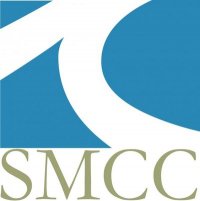Below is a summary of the abstract you submitted. Presenting author(s) is shown in bold.
If any changes need to be made, you can modify the abstract or change the authors.
You can also download a .docx version of this abstract.
If there are any problems, please email Dan at dar78@pitt.edu and he'll take care of them!
This abstract was last modified on March 31, 2025 at 3:14 p.m..

Myram is a bacteriophage that infects Microbacterium foliorum, discovered in sandy soil beside Willard Beach in South Portland, Maine by Southern Maine Community College student Solomon DeMello. Sequencing of the phage genome determined Myram to be a member of the EE phage cluster with 17362 base pairs, including 9-base 3' overhang. These base pairs make up 25 genes, 3 of which are in the reverse direction. Genome annotation revealed notable non-structural genes such as Lsr2-like DNA bridging proteins which are responsible for DNA organization and compacting that resemble the Lsr2 proteins found in Mycobacterium, and HNH endonucleases that are part of an enzyme group that catalyzes the cleavage of DNA during replication and phage DNA packaging. Myram formed a possible mesa from which cultures were isolated. The putative lysogens were tested to form new plaques and for superinfection immunity. Both experiments showed potential lysogeny. UV induction was used for further testing, resulting in plaque formation.
Wrackline is a cluster GF bacteriophage discovered by Sam Cousins and investigated by Kit Williams that infects Microbacterium sp. strain Casco Bay, a marine bacteria. Wrackline was collected on Willard Beach, ME from sand along the high tide line beneath organic material. The phage genome is 42,148 base pairs long and contains 79 genes, 26 of which are orphams. Though the phage sits in cluster GF, there is only moderate similarity between Wrackline and other GF phages. Currently, only four other phages are known to infect Microbacterium sp. strain Casco Bay, and only three others have been sequenced. Proteins of note include multiple HNH endonuclease, methytransferase, and a RusA-like resolvase.
